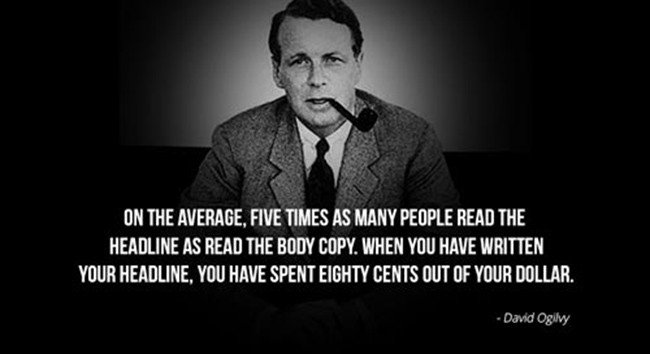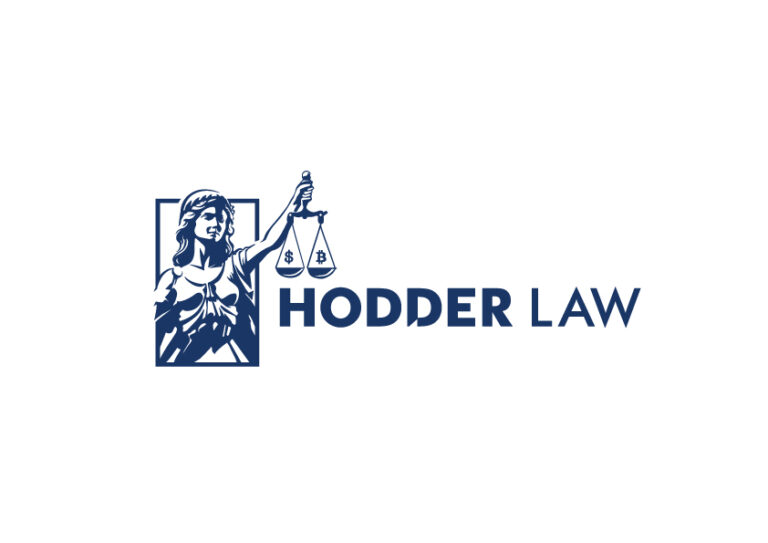How to write Winning PR headlines – 21 Powerful Headline Examples
Writing great or winning PR headlines is the absolute most important part of good press campaigns and effective communication. In this guide we share tips and frameworks that’ll help you improve your “headline game”.
Table of Contents
“Spend 80% of your time on the headline, 20% on the article”
Now this might sound a bit extreme and yes, it doesn’t apply everywhere. But let’s assume you’ve spent significant time crafting a beautiful piece of literature but have a mediocre title. It would be a waste because you’d risk that nobody would read your piece in the first place.
Bad headlines or unfitting titles mean nobody will click, nobody will buy, nobody will read your article. Makes sense?

Finding winning PR headlines isn’t easy at all. Copywriting legend David Ogilvy was a big believer in headlines. For that matter, all copywriting legends were big believers in headlines. After all, memorable, outrageously effective headlines are what made these folks advertising icons.
But, historic headlines – in almost every case – are not the result of a sudden burst of inspiration. They take hard work. One of Ogilvy’s most successful headlines took 104 drafts to write. Gene Schwartz would sometimes spend a full week on his headline and first paragraph of copy.
So, don’t be disappointed if you can’t master the art of headlines from the first try. You’ll have to put the work in to get better. But it’ll be worth it in the end because it’s a skill nobody can take from you.
How to create Awesome headlines?
So how can you develop great headlines? Well just like everything in life, the best way to learn a new skill, is to copy others. Learn through imitation.
When you don’t have any experience, your headlines will suck and nobody will click them. Learn from the pros and check how the others are doing it. Then just adapt and imitate.
Try it out, study and analyze headlines word for word at the New York Times, BBC etc and you might uncover some interesting magic on your own.
Google News
Cointelegraph
Forbes
Buzzfeed
What are Key Principles for better headlines?
There is no one size fits all, headlines are as complex as language and our world itself. But there are principles that stay forever such as urgency, news or “FREE”.
Often, you can easily improve your headline by applying one or two of these principles:
• A headline has to be KISS (keep it simple, stupid)
• Don’t add too many ideas, focus on the most important thing.
• Clickbait is ok but the article should also keep its promise to avoid disappointment.
• The more relevant the headline the better
“Elon Musk sells Tesla stock” , “California could ban this fashion trend”
Be sure to calibrate the fine line between ‘almost unbelievable’ yet ‘still credible’ and of course deliver on the promise. Winning PR headlines should never lie.
The art of clickbait without ‘being evil’ or annoying is a science of its own. Study it so you don’t mess up. We highly recommend the video by Veritasium “Clickbait is Unreasonably Effective”.
Step-by-step guide for winning PR headlines
Now you might still struggle to nail it. That’s why we’ve come up with a bulletproof method that will turn your *horrible* titles into winning PR headlines.
Headlines are becoming increasingly important in the internet age. They drive the traffic and they serve as source material for search engines. People just scan headlines to get informed. Only if it is really important and relevant to them do they decide to open the article.
Winning PR headlines should be clear and specific, telling the reader what the story is about, and be interesting enough to draw them into reading the article.
5-10 words at the most
Headlines should be accurate and specific
“City Council to Cut Taxes” doesn’t mean the same thing as “City Council to Cut Budget”
Use present tense and active verbs, but don’t start with a verb
“Man Skateboards for Homeless”
Use infinitive form of verb for future actions
“Convention to Create Jobs…”
Do not use articles – a, an, the
Do not use conjunctions like and – you can substitute a comma
“President Declares Peace, Holiday”
Should be complete sentences or imply complete sentence
“Crackdown on Trafficking” doesn’t tell you who’s doing the trafficking and what kind of trafficking
Avoid repetition – Headlines summarize; they don’t repeat the lede.
“Rays Win” – not Rays “Win Final Game of Playoffs”
Don’t use unidentified pronouns
“They Win Pennant!”
Unlock the Magic of Three: Copywriting Tips from the Titans
For winning PR headlines and “call to action” phrases, the number three holds a special charm. How can you use this power to elevate your writing? Let’s dive into the wisdom of advertising giants to find out.
The Benefit Blitz
“What’s the payoff?” That’s the question your audience wants answered. John Carlton, the ‘Copywriter’s Coach’, advises starting with three punchy drafts brimming with benefits that only your company offers. Ask yourself:
- What makes you stand out in a crowded market?
- What’s your unique selling point?
- How will you transform your customer’s world?
Befriend Your Inner Critic (Later!)
Joe Sugarman, of ‘Adweek Copywriting Handbook’ fame, embraced a write-first-edit-later philosophy. Channel this energy – let your initial drafts pour out raw and passionate. Your inner editor will have plenty of time to refine things later. The real magic of killer copy lies in the power of revision!
Don’t Reinvent the Wheel, Refine It
The legendary David Ogilvy’s timeless wisdom guides us even today. Absorb his iconic insights:
- “If it doesn’t sell, it isn’t creative.”
- “The consumer isn’t a moron; she’s your wife.”
- “Never stop testing, and your advertising will never stop improving.”
The “What’s In It for Me?” Test
John Caples, a master of results-driven copy, knew that irresistible headlines address the reader’s burning question: “What’s in it for me?”. Every headline you write must provide the compelling answer.
Channel Your Inner Salesperson
Claude Hopkins, the scientific advertising pioneer, saw copywriting as the written equivalent of a persuasive sales pitch. Write as if engaged in one-on-one conversation. Drop the jargon, and focus on clarity and genuine connection.
The Art of the “Hold Up!” Headline
Eugene Schwartz, author of ‘Breakthrough Advertising’, reminds us that your headline has one crucial task – make the reader pause and long to know more. Here’s how:
- Pose your claim as a question: “Want a 20% boost in click-throughs?”
- Highlight what makes you different: “The only [solution] designed for…”
- Intrigue with exclusivity: “Not for businesses already crushing their 2025 goals.”
The Takeaway
The most unforgettable copywriting connects on an emotional level. The legends understood that tapping into readers’ dreams, pain points, and aspirations is far more powerful than bland facts. Next time you’re crafting words, let these tips infuse your work with the captivating power of three!
Examples of winning PR headlines
Here are examples of press/news headlines with a subtle propaganda edge, inspired by the tactics of PR and copywriting legends.
Please note: It’s important to use these techniques responsibly, as some might be considered manipulative if used without integrity.
Inspired by Edward Bernays (Propaganda Pioneer)
- “Doctors Find [Product] Essential for Vibrant Health and Happiness” (Appeals to authority, targets desires)
- “Smart Homeowners Embrace [Product] for Ultimate Security and Convenience” (Social proof, plays on aspiration)
- “Don’t Be Left Behind: [Product] Is the Key to Success in the Modern World” (Subtle fear of missing out)
- “Give Your Family the Gift of [Product] this Holiday Season” (Emotional appeal, ties into occasion)
- “Scientific Study Proves [Product] Delivers Unmatched Results” (Science can be persuasive, even if study is selectively presented)
Inspired by Ivy Lee (Early PR Master)
- “[Company] Commits Major Funds to Combat [Social Issue]” (Socially responsible, deflects from potential negatives)
- “[Company] CEO Outlines Bold Vision for the Future” (Inspiring, paints a positive trajectory)
- “In Response to Public Concerns, [Company] Implements Sweeping Changes”(Crisis management, but spun positively)
- “[Company] Technology Helps Communities Recover After Natural Disaster” (Good deeds in a time of need)
- “[Company] Joins Coalition to Address Global [Challenge]” (Looks proactive, aligns with a larger cause)
Inspired by Copywriting Giants like John Caples & Claude Hopkins
- “At Last! The Easy Way to [Achieve Desired Outcome]” (Direct, speaks to a pain point)
- “Introducing the Secret Weapon for [Target Audience’s Goal]” (Intriguing, promises powerful solution)
- “Free for a Limited Time: Experience [Product’s] Benefits Risk-Free” (Reduces barrier to entry)
- “[Ordinary Person] Achieves Extraordinary Success with [Product] – You Can Too!” (Relatable success story)
- “Why Pay More? [Product] Delivers the Same Results at a Fraction of the Cost” (Value proposition, price comparison)
Modern Twists with a Hint of P.T. Barnum (Exaggeration Master)
- “[Product] Will Change Your Life Overnight – We Guarantee It” (Bold, slightly unrealistic claim)
- “The Most Important [Event] of the Year – And [Company] Is at the Center” (Inflates event’s significance)
- “Industry Experts Stunned by [Product’s] Unbelievable Capabilities” (Hyperbole, builds curiosity)
- “The Secret That [Competitors] Have Been Desperate to Hide” (Conspiracy angle, feels like ‘inside info’)
- “This One Simple Trick with [Product] Will Blow Your Mind” (Clickbait-style, overpromises)
- “You Won’t Believe This [Outlandish Claim] About [Product]… But It’s True” (Challenges expectations, invites investigation)
Important Disclaimer: Always prioritize truthful and ethical communication. These examples are for understanding manipulative techniques, not necessarily for direct use. As we pointed out earlier, winning PR headlines never lie. If you want editors to publish your headline you must stick with facts.
Are AI headlines any good?
Yes and no. With the right prompts, ai assistants such as Gemini from Google or ChatGPT are certainly good to kick of a creative process and deliver a bunch of shots to get inspiration.
However, AI-generated headlines are never 100% good. They’re usually below average.
Why?
Because AI is just a huge recycling machine. It cannot really be original because of it’s technical design. It will always rely on the data that its fed with and most often, that data is boring.
On top of that, AI assistants are often restricted due to political correctness and other limiting factors which reduce the overall creativeness and originality of output.
Therefore, you shouldn’t rely on it if you’re looking for truly winning PR headlines.
At RankPlan we believe AI is a great tool but true creative genius cannot be replicated. It takes countless hours of work to become a master at headlines and there is probably no shortcut.
Additional Resources
Study, study, study and repeat. Winning PR headlines don’t fall from the sky but are a result of relentless exercise and honing your craft, so get to work, quick.



